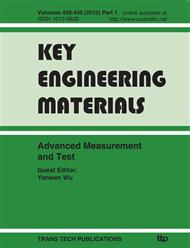p.429
p.434
p.440
p.445
p.451
p.457
p.463
p.469
p.475
Multi-Bit DCSK System Performance Analysis in Multipath Channel
Abstract:
In order to improve DCSK scheme’s efficiency and robust in multipath channel, a novel multi-bit DCSK system was put forward. The system’s each bit is added to some protecting time space. A number of bits are composed to a frame and differential scheme are adopted in conjoint bits. In the multipath channel the system’s BER was obtained in theory. The results show that compared to DCSK system, it has higher transmission efficiency. It can overcome intra-symbol and inter-symbol interferences induced by multipath effect and capture more multipath energy.
Info:
Periodical:
Pages:
451-456
Citation:
Online since:
June 2010
Authors:
Keywords:
Price:
Сopyright:
© 2010 Trans Tech Publications Ltd. All Rights Reserved
Share:
Citation:


